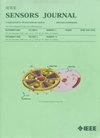Space Grafted Velocity 3-D Boat Detection for Unmanned Surface Vessel via mmWave Radar and Camera
IF 4.3
2区 综合性期刊
Q1 ENGINEERING, ELECTRICAL & ELECTRONIC
引用次数: 0
Abstract
Recently, unmanned surface vessels (USVs) have played an increasingly important role in autonomous exploration, and boat detection is an important task for USVs. While most existing boat detection methods focus on 2-D detection, 3-D detection that provides valuable spatial direction for moving target estimation has not been studied in the boat detection field. However, 3-D boat detection on water surfaces faces challenging problems, such as small sizes of detected targets and diverse moving directions. Considering that traditional LiDAR-based 3-D boat detection methods require high hardware costs, we fuse millimeter-wave (MMW) radar and high semantic camera to achieve low-cost and high-quality 3-D boat detection. We propose a novel radar-camera fusion boat 3-D detection model named RCBDet. The proposed RCBDet uses a new dual radar encoder and first introduces Doppler speed information from MMW radar into neural network to overcome sparse radar points. A new radar-camera attention module is designed to effectively combine camera features, radar spatial features, and radar velocity features, encapsulating not only shape and semantic attributes but also spatial orientation information. In our collected boat 3-D detection dataset, RCBDet achieves state-of-the-art accuracy compared with other single-modality baselines and radar-camera fusion baselines. Moreover, we conducted comprehensive ablation experiments to validate the efficacy of the designed modules. The experimental results demonstrated that the proposed radar-camera fusion model effectively fuses MMW radar features and camera features.求助全文
约1分钟内获得全文
求助全文
来源期刊

IEEE Sensors Journal
工程技术-工程:电子与电气
CiteScore
7.70
自引率
14.00%
发文量
2058
审稿时长
5.2 months
期刊介绍:
The fields of interest of the IEEE Sensors Journal are the theory, design , fabrication, manufacturing and applications of devices for sensing and transducing physical, chemical and biological phenomena, with emphasis on the electronics and physics aspect of sensors and integrated sensors-actuators. IEEE Sensors Journal deals with the following:
-Sensor Phenomenology, Modelling, and Evaluation
-Sensor Materials, Processing, and Fabrication
-Chemical and Gas Sensors
-Microfluidics and Biosensors
-Optical Sensors
-Physical Sensors: Temperature, Mechanical, Magnetic, and others
-Acoustic and Ultrasonic Sensors
-Sensor Packaging
-Sensor Networks
-Sensor Applications
-Sensor Systems: Signals, Processing, and Interfaces
-Actuators and Sensor Power Systems
-Sensor Signal Processing for high precision and stability (amplification, filtering, linearization, modulation/demodulation) and under harsh conditions (EMC, radiation, humidity, temperature); energy consumption/harvesting
-Sensor Data Processing (soft computing with sensor data, e.g., pattern recognition, machine learning, evolutionary computation; sensor data fusion, processing of wave e.g., electromagnetic and acoustic; and non-wave, e.g., chemical, gravity, particle, thermal, radiative and non-radiative sensor data, detection, estimation and classification based on sensor data)
-Sensors in Industrial Practice
 求助内容:
求助内容: 应助结果提醒方式:
应助结果提醒方式:


